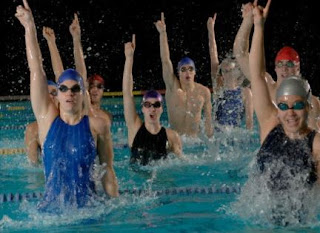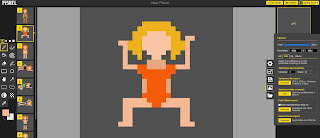Prototypes
The basic unit of digital design created using digital media is pixels. In addition, pixel art is a digital art form that colors individual pixels to create images. According to FELGO (2019), the term Pixel Art was first published in 1982.
Typically, pixel art is used to produce games. Animation such as characters or objects that can be used in mobile games is called sprites. (FELGO, 2019) There are several reasons for this. Firstly, With sprites, you can add and remove visual elements as you please without having to edit any of the other visual components of your scene. If I had to make every scene of the game into an image, it would later suffer in the process of editing or modifying it.
Of course, I can work on pixel art in illustrations or Photoshop, which I usually use. Nevertheless, I decided to use the pixel art software to understand more about pixel art in this project. Among some pixel art software, I tried two pixel art software for prototypes.
The PiskelApp is a free online pixel editor that emphasizes creating sprites. With the ability to save and import pixel art online, you can edit existing pixel art. The explanation of app software for first-time users was good, and layer separation and copying functions were remarkably built, making it easier to work.
This is my experiment using PiskelApp. It is a pose of a character in Thomas’s The Swimming Hole(1884-5). Pixel art works had more important features of dots than lines, so it was difficult to express a person's body naturally. I learned from the prototype that I had to think more about how to solve this problem in my future work. Indeed, Through this work process, the basic composition of a person, head, body, and body, will be further developed into other poses by setting rules for expressing the body in pixels.
This is my experiment using Pixie. Compared to the Piskel app used earlier, the components of the tool were simple. Among them, there were some of the most interesting and useful frameworks among them. First, it is a tool that has symmetric functions. (Located at the bottom left of the page)
It is a tool that has the ability to mirror both top, bottom, left and right. This will be useful because when doing pixel art, I can make the same number or location of pixels at once without calculating them.
It is not appropriate to work on the poses of people with dynamic movements, but it would be good to use to describe static people who are symmetrical to the left and right. The image above is a person's pixel art that I have made using a tool that has symmetric functions.






























